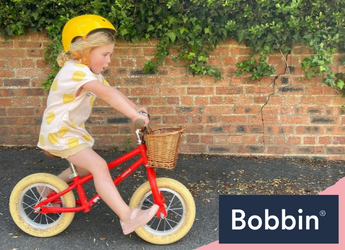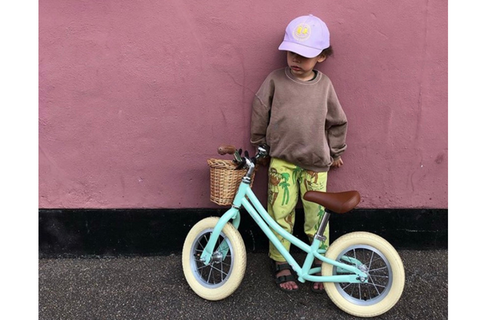Teach Your Kid How to Ride a Balance Bike
A popular alternative to traditional training wheels is gaining attention: balance bikes.
Cycling is a low-impact exercise that people of all ages can enjoy, and toddlers are no exception. There are numerous benefits to cycling for these little ones. One of these is muscle development, which kids aged 18 months to 2 years can benefit the most from.
While a pedal Bobbin bike is a classic option, many enthusiast parents are opting for balance bikes as a precursor. They find these pedal-less bicycles a better starting point, and they’re not wrong about that. This guide can help you teach your future rider learn to ride one. Let’s get started!
How Do Balance Bikes Work?
Balance bikes have a frame without pedals, along with a fork, handlebars, and wheels, but no drivetrain. Unlike traditional bikes, they don’t have stabilisers or training wheels attached.
Kids move forward by pushing off the ground with their feet, like the Flintstone family’s method. This helps them develop balance and coordination independently. As they gain confidence, they can transition to pedalling bikes.
The recommended age for starting on a balance bike is between 18 months and two years old. This is when most children are physically and developmentally ready to learn pedalling.
Note: Balance bikes can be suitable for up to four years old or even older, depending on their learning pace.
Mastering Balance Bikes
There are four steps to riding a balance bike for toddlers:
- Stand and walk (kids from ages 18 months to 3 years old)
- Sit and walk (between 2 and 3 years old)
- Sit, run, and balance (kids from ages 2 to 4 years old)
- Sit, run, and glide (kids over age 2.5 and 4 years)
1. Stand and walk
During this stage, your child will likely stand over the bike and walk with it. They might not even try to sit on it; they’ll just walk it around, whether it’s around the block or just a few feet.
This stage can vary in duration, but for most toddlers, it’s the longest part of learning. It may take months before they feel comfortable sitting down on the bike. The younger the child, the longer they may stick to this phase of learning.
Let them explore at their own pace. Also, encourage them to try riding slowly without the support of training wheels.
2. Sit and walk
Eventually, your little one will learn to sit on the bike. However, once they do, they might still prefer to walk it for a while. The excitement stage, though, starts to build. Once comfortable with sitting and moving, they can advance to the ‘sit and run’ stage.
Encourage your child by introducing them to other balance bike riders. Being around peers can motivate them to keep improving. But remember, don’t make them feel like they are being compared to others. Instead, understand what works best for your child — will they benefit from it or not?
3. Sit, run, and balance
Get ready to keep up with your child during this stage! Once they start running on their balance bike, make sure you’re prepared to match their pace.
After mastering step #2, they’ll also become proficient at balancing. Allow them to practise in open areas where they won’t accidentally veer into the street, for instance. Take the opportunity to teach them where it’s safe to ride and where it’s off-limits.
Tip: Our guide to the best places to learn to ride a bike can provide you with ideas.
4. Sit, run, and glide
Your child has become a master of their bike by now, but don’t rush them into transitioning to a pedal bike. During this final stage, your child can experience the most exciting part of the ride: gliding. They may naturally progress to this step on their own.
While your child may need guidance in gliding, encourage them to roll down a driveway or a grassy hill. Consider setting up small ramps in your backyard for trail riding training. Once your child is comfortable with this, adding pedals, rear brakes, and gears will be much easier.
Encourage them to keep practising, from the simple stand and walk to mastering the glide. When they fall, offer encouragement and praise and be there to comfort them. As your little rider becomes more adventurous, they’ll be more likely to brush off falls and laugh!
Round-up
Mastering balance in cycling can happen quickly, but pedalling and braking might take longer. If your child is hesitant to begin their balance bike journey, allow them to take their time and wait until they feel ready. Overall, witnessing their development can be rewarding for both you and your child.
Check out our next post for additional tips on cycling with a toddler. If you have any questions, don’t hesitate to contact us.












